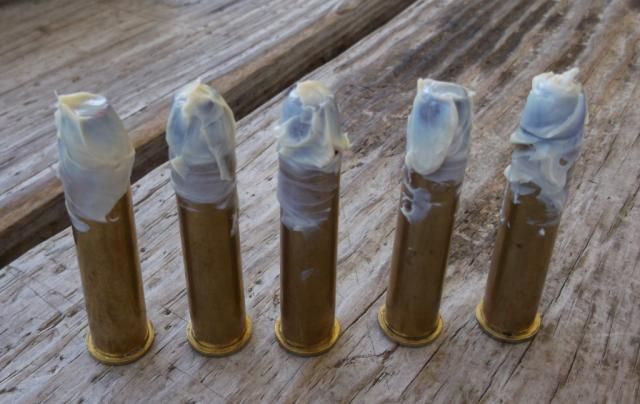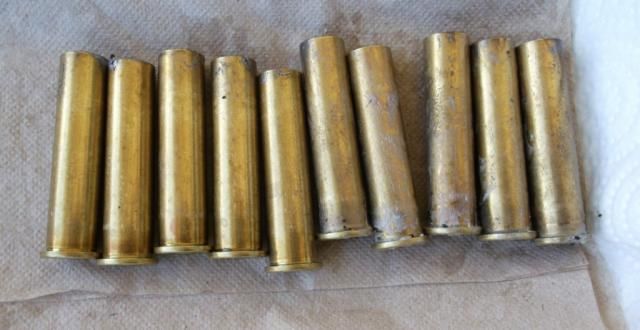I don't have a picture of mine to show. As long as the action, barrel, are not rusted through, not been exposed to extreme heat, part numbers match up between breech block and barrel, a first order examination would indicate that it ought to be OK with black powder equivalent loads.
I ran a test of greased bullets to test the veracity of the US Army claims that grease pinches the bullet, dangerously raises pressures, and dangerously raises bolt thrust. I found all the claims to be totally unsupported and have concluded, the claims are false, are an example of Army incompetence, and a coverup of Army incompetence. This is the results of shooting my M1873 trapdoor with greased bullets. These 45/70 cases were heavily greased well below the bullet by dipping and twisting in a can of lubriplate AA130.

The first cartridge to be fired is in the left picture, and a greased, fired case is in the right. Notice how much grease is in the action after a number of these heavily greased rounds have been fired. Instead of grease pinching the bullet, it migrates back into the action. This is a primary claim by the US Army, that grease pinches the bullet and raises pressure. Grease may be incompressible, but it is not immovable, and it flows under pressure. Given the taper of the cartridge and the difference in thickness of the case, grease moves up the throat, and out the back of the action, showing that this Army claim is false and unsupportable in the real world. Grease also lubricates the bullet and I experienced zero bullet leading in this barrel with greased bullets.

A tray of fired, ungreased 45-70’s on right, greased fired 45-70 on left.
Ungreased on left, greased on right

I did not use blackpowder, I used AA5744, which is a powder the manufacture claims is safe, at these loads, in this blackpowder action. Accuracy with my loads was horrible. The bullets are not matched to the groove depth. The rifle shot way high at 100 yards, and after looking at ballistic tables, it should shoot way high at 100 yards with the original sight settings.
Code:
[SIZE="3"][B]M1873 Springfield Trapdoor 1884 rebuild[/B]
27" sight radius
405 LRN 27.5gr AA5744 R-P cases WLR trimmed 2.085"
14 Aug 2014 T = 78 °F
Ave Vel = 1302
Std Dev = 11
ES = 26
High = 1315
Low = 1289
N = 5
First round 15.5" high, rest, 19.5 to 23" high at 100 yards
Ballistic calculator: 100 yd zero, 25" drop at 200 yds, 82" drop at 300 yds
405 LRN 27.5gr AA5744 R-P cases WLR trimmed 2.085"
Heavily greased with Lubriplate 130A
14 Aug 2014 T = 78 °F
Ave Vel = 1346
Std Dev = 15
ES = 38
High = 1371
Low = 1333
N = 5
At lowest rear sight setting, two bullets 22", one @ 24", one @ 26.5", one @ 30.15"
at 100 yards
[/SIZE]
Do not ever shoot jacketed bullets in a 19th century barrel. The barrel steel, might not be steel, might be wrought iron, regardless, if it is steel, it is dead soft and jacketed loads will wash out the rifling.











